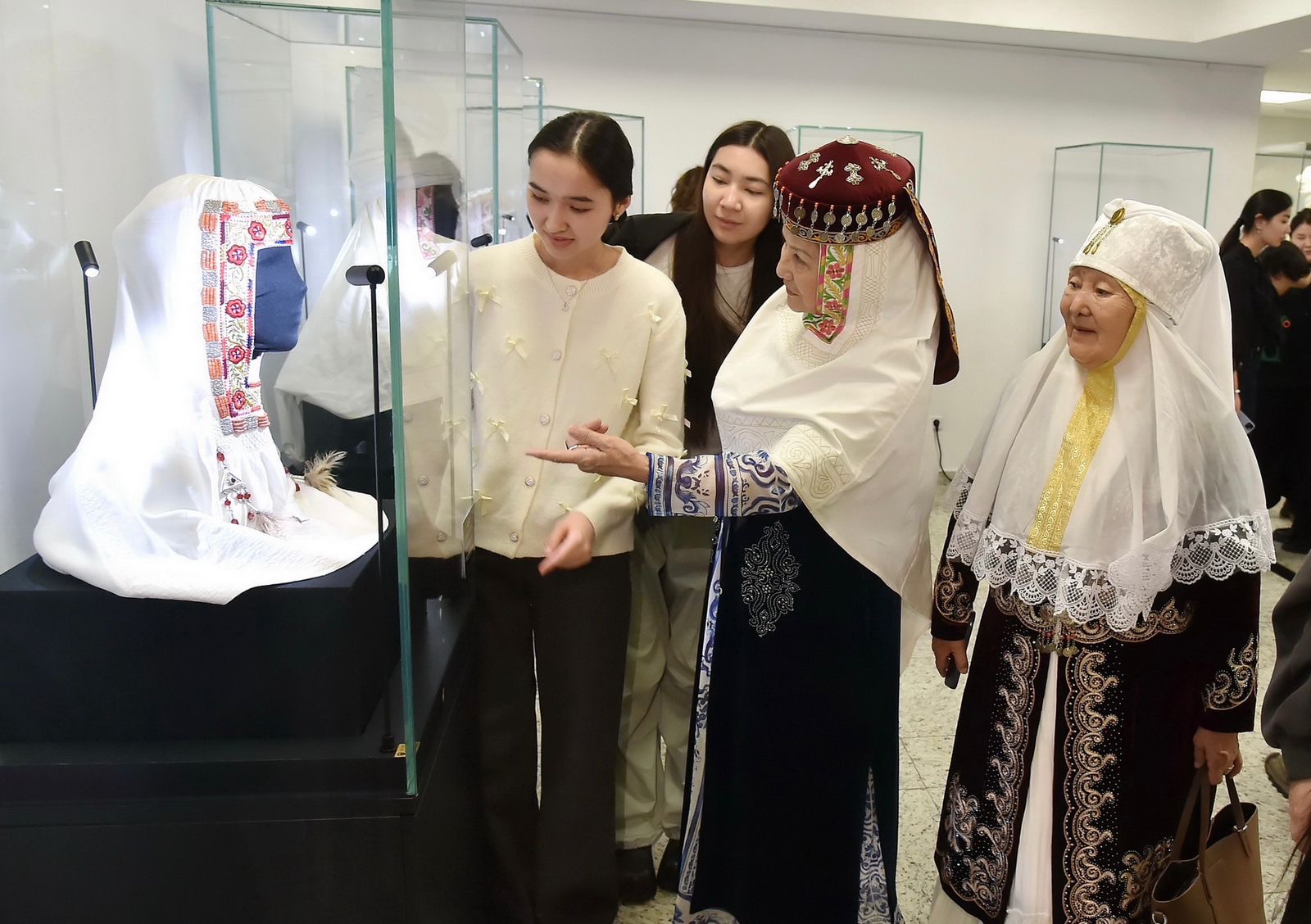Sacred Kimeshek: Tilek Sultan's Unique Collection on Display at the National Museum

A personal exhibition of Tilek Sultan, a member of the Union of Craftsmen of the Republic of Kazakhstan, holder of the UNESCO International Quality Mark, “Kieli Kimeshek,” has opened in the capital.
For many years, Tilek Sultan has been researching the women's headdress kimeshek, actively engaged in its embroidery, and has collected an extensive ethnographic collection of national costumes and jewelry, as well as household items. The master works in the technique of bead embroidery and teaches this art to everyone on a systematic basis. Tilek Sultan's products have been recognized at master competitions in the cities of Almaty, Taraz and Semey, and have also been presented at international exhibitions in Turkey, the USA, India, Uzbekistan, Turkmenistan and Kyrgyzstan. In 2023, the collection “Kazakh National Costumes” was shown at an exhibition in the USA, and a personal exhibition was also organized in the city of Turkmenabad, Turkmenistan. He also participated in the World Nomad Games, which took place in Kazakhstan in 2024.
“Kimeshek has a sacred meaning for any Kazakh, because it is a symbol of the mother, a reminder of her. Unfortunately, it is now very difficult to find any research papers or documentaries dedicated to kimeshek. Only some black and white photographs of women of that time have survived. Of course, as a designer, I could create products in a modern style, according to my fantasies. However, my goal is to restore the national headdress according to historical data, because kimeshek was of great importance in the image of a woman. It was possible to determine her family, origin, age and status in society. We can safely say that how many clans there were in Kazakh society, there were the same number of types of kimeshek. Perhaps a lifetime is not enough to explore and restore all this information. All this is lost, unfortunately. The last century influenced the history of the kimeshek, which interfered with the image of a Soviet woman,” said Tilek Sultan.
Tilek Sultan works in the technique of bead embroidery and teaches this art to everyone on a systematic basis. Before the opening of the exhibition in the capital, the famous ethno-designer held a master class on wearing a kimeshek and wrapping a scarf over it.
“In each region of Kazakhstan, kimeshek was tied in its own way. In the west, in Mangistau, it was even called differently - “zhaulyk” or “kos zhaulyk”, because they first put on one scarf and tied another over it. This type of kimeshek can be seen in the photographs of Dina Nurpeisova. In the Middle Zhuz they used kimeshek, and on top of it a falling four-pointed scarf - shylauysh. And it was tied differently among the Naimans, Kereis and other clans. Kimeshek in the Senior Zhuz was distinguished by embroidery and a special upper part,” noted Tilek Sultan.
Tilek Sultan was born in Urumqi, Xinjiang Uygur Autonomous Region of the People's Republic of China. In 2008, he returned to his historical homeland in Kazakhstan. Interest in traditional Kazakh craft arose from childhood. The master learned this art from his grandmother. Using complex embroidery techniques, he has already restored many national costumes, such as kimeshek, zhargak shapan, embroidered trousers, women's chapans, as well as men's and women's skullcaps.
Archaeological excavations and written monuments testify to the existence of the art of embroidery in Kazakh culture since ancient times. Kazakh embroiderers used various threads, such as wool, silk, silver and gold. This type of embroidery was called “altyndau” (embroidery with gold and silver threads). Gold and silver embroidery was considered an elite art used to decorate ceremonial clothing, velvet boots and shoes. Kazakh traditional embroidery was on the verge of extinction, but thanks to the efforts of talented craftsmen, it has recently begun to revive. Tilek Sultan also makes a great contribution to the development of traditional craft and the art of embroidery, combining the past and present of Kazakh culture in his products.